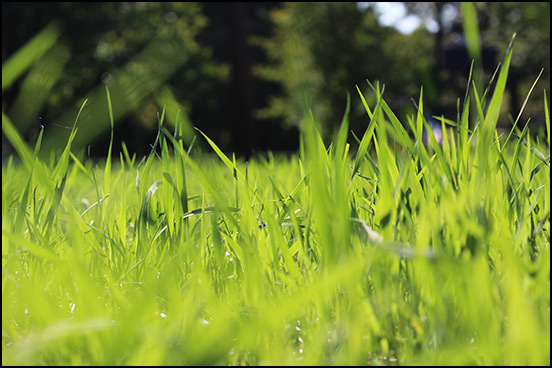
Dhruba Dhakal says stockpiling tall fescue is one of the cheapest and easiest options for fall and winter grazing, if fescue stands are strong.
Alternative Forage Options
While many areas have gotten recent rain, drought is still in effect in many areas of the country.
Drought conditions were pronounced during the 2018 forage growing season, resulting in reduced growth of cool-season grasses and legumes. Some areas have reached severe and extreme drought conditions. Cattle producers have a low supply of forage and hay this year. University of Missouri Extension Agronomist Dhruba Dhakal offers some alternative or emergency forage options to feed beef cattle during fall, winter and spring.
Stockpiling tall fescue
Dhakal says stockpiling tall fescue is one of the cheapest and easiest options for fall and winter grazing, if fescue stands are strong. If plants are still alive and there is more than 75% fescue left, fertilize with 40-60 pounds (lb.) of nitrogen (N) per acre in late August to early September, then close the gates. Allow grass to grow until November. Then, begin cattle grazing.
If using urea with Agrotain®, a rain needs to occur within 14 days to incorporate it and minimize volatilization. Ammonium nitrate and ammonium sulfate are less prone to volatilization loss compared to urea.
Strip-grazing or rotational grazing using paddocks is always a better option to increase carrying capacity of land, as well as maintaining pasture health. Reports show rotational grazing will nearly double utilization. An early ice storm or foot traffic on these fields could deteriorate the grass prematurely, Dhakal says.
Using drought-stressed corn and soybeans
Utilizing drought-stressed corn by making silage is another option to feed cattle during fall and winter months. Typically, nitrate levels in corn drop 40%-50% during the ensiling process if the silage ferments well. It is always recommended to test nitrate if feeding either corn green-chop or silage, Dhakal says.
Drought-damaged soybeans can be grazed when plants are 12-18 inches tall. He recommends checking on herbicide labels before grazing or feeding cattle, because some herbicides have a longer residual period. Soybeans can be hayed at early R-3 and made into silage at R4-R5 stages. Cattle can be grazed on corn and soybean stubble in the fall.
Ammoniating corn or sorghum stover might provide other options during fall.
Planting small grains or winter annuals
Dhakal says pastures with poor stands of fescue or with no fall growth potential may be planted to winter annuals if there is good soil moisture to establish plants. Planting winter annuals into a strong fescue stand is counterproductive and may not be cost-effective, he says.
There are some winter annuals that are well-adapted and suited to graze and harvest during fall and winter months in Missouri, he says. They are cereal rye, triticale, winter wheat, winter barley, turnips, radishes, rape and canola. If cattle producers grow row crops, they can plant these winter annuals as a cover crop after harvesting corn and soybeans. These crops offer double benefit by covering the land and providing forage for cattle during winter and spring months.
Cereal rye is easier and establishes more quickly compared to other small grains. It is the most winter-hardy small grain and provides forage even during late winter. It provides excellent fall tonnage and has very good regrowth potential after grazing, he adds. Producers can increase seeding rates up to 50%, planning to graze during fall and harvesting again in spring. Dhakal suggests tight grazing in the spring to maintain vegetative growth and forage quality.
Triticale is the cross between cereal rye and wheat, providing a good compromise between cereal rye and wheat regarding tonnage, quality and a balance between fall and spring grazing. Wheat has little fall growth. So, it provides the most forage in the spring and has higher-quality forage compared to rye and triticale. It may be one of the good options for early spring hay or haylage. Barley is also a good option for fall planting for early growth, quality and tonnage prior to winter. Winter hardiness can be an issue for barley, Dhakal said.
Planting brassicas and winter legumes
Brassicas such as turnips, radishes, kale and canola planted at 3 to 8 lb. per acre are other options for feeding cattle during fall. Turnips may provide up to three tons of forage during October to December. It establishes easily and quickly, but has little regrowth potential. Bloat, sulfur and nitrate toxicity, and milk flavoring might be possible side effects and must be managed against. Dhakal suggests mixing either with cereal grain forage or annual ryegrass or hay. It may have up to 24% crude protein (CP) and 75% total digestible nutrients (TDN) if grazed or harvested at early bloom stage, Dhakal says.
There are some winter annual legumes such as Austrian winter pea and hairy vetch that producers can plant in a mixture with small grains during the fall. These legumes fix atmospheric nitrogen. They have higher CP and TDN compared to non-legume forages, and improve the overall nutritive value of forage, Dhakal adds.
Planting spring oats
Dhakal also suggests planting spring oats during March, which can be used as hay and silage crops for feeding cattle. Their forage quality would be higher if harvested from booting to early heading stage for making hay and from milking to dough stage for making silage.

Editor’s Note: Dhruba Dhakal is an agronomist for the University of Missouri Extension. The information presented in this article is from his drought-management presentation in several northern Missouri counties in summer 2018.






